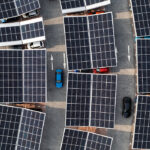It’s the weekend! Kick back and catch up with these must-read articles from around the web:
Green Subsidy Race? 5 Experts Explain What to Expect (World Economic Forum) In recent months, the United States and European Union have introduced green subsidy schemes aimed at accelerating renewable technologies. While the US Inflation Reduction Act and EU Green Deal Investment Plan encourage private sector innovation, some people fear they could threaten developing economies and worsen global trade tensions. As the US Inflation Reduction Act and EU Green Deal Investment Plan take shape, experts are considering what green subsidies could mean for the future of global trade, climate change and supply chains. Here’s what they think we can expect.
Reuse of Coal Plants Can Cut Small Modular Nuclear Reactor Development Costs by 35%: Report (Utility Dive) Nearly one-fourth of the current U.S. coal-fired fleet is scheduled to retire by 2029, providing opportunities to site advanced nuclear plants, specifically small modular reactors, a Washington, D.C. think tank says in a recent report. The reactors can reuse coal plant electrical equipment and steam-cycle components that, combined with reuse of transmission and administrative buildings, can reduce SMR construction costs by 17% to 35%. The Nuclear Regulatory Commission’s certification in January of NuScale Power’s SMR design, the country’s first such federal approval, “pushes the technology closer to maturity,” the report said.
WEBINAR: AI-based HAVAC Management for Real-World Results (Siemens) AI and analytics can be powerful tools in the overall management of your building when implemented with your goals in mind. Join Siemens experts to learn how cloud-based AI applications can optimize central air handling systems, working in tandem with your existing building automation equipment. Machine learning algorithms can now monitor and control key parameters to optimize operations based on your priorities. Real-world case studies will be presented that address the demands you face daily with handling excessive energy use, comfort control issues, and identifying and correcting operational issues. REGISTER HERE
Inside the Fossil Fuel Industry’s ‘Existential’ Battle Against New York’s Climate Plan (New York Focus) “We are facing an existential threat the likes of which we have never seen.” Those were the opening words of Rocco Lacertosa, New York’s top oil heat lobbyist, at a webinar addressed to his industry colleagues last month. The threat? New York’s climate law, passed in 2019 and moving towards implementation this spring as lawmakers consider a raft of new measures to achieve its legally binding emissions cuts. From deceptive Facebook ads and hundreds of thousands of mailers to customers, to six-figure lobbying campaigns, here’s how fossil fuel companies are fighting to keep electrification at bay.
Renewable generation surpassed coal and nuclear in the U.S. electric power sector in 2022 (U.S. Energy Information Administration) Last year, the U.S. electric power sector produced 4,090 million megawatt hours (MWh) of electric power. In 2022, generation from renewable sources—wind, solar, hydro, biomass, and geothermal—surpassed coal-fired generation in the electric power sector for the first time. Renewable generation surpassed nuclear generation for the first time in 2021 and continued to provide more electricity than nuclear generation last year. Explore the U.S. electricity generation by each renewable energy source and discover the states that contributed the greatest shares of U.S. utility-scale electricity generation.
It’s An Electric Train, But Don’t Call It An Electric Train (CleanTechnica) A new type of autonomous electric train is on track to electrify the US freight rail network and push diesel trucks off the highways, too. Hauling freight by rail is an energy-saver compared to trucking it on highways, but there is always room for improvement. A startup called Parallel Systems has come up with a new approach to electric trains. Instead of depending on battery powered locomotives to electrify whole freight trains, the company has come up with a system of individual, autonomous electric “rail vehicles” that vaguely resemble long, flat versions of the new zero emission USPS delivery trucks from the front.
NULL




